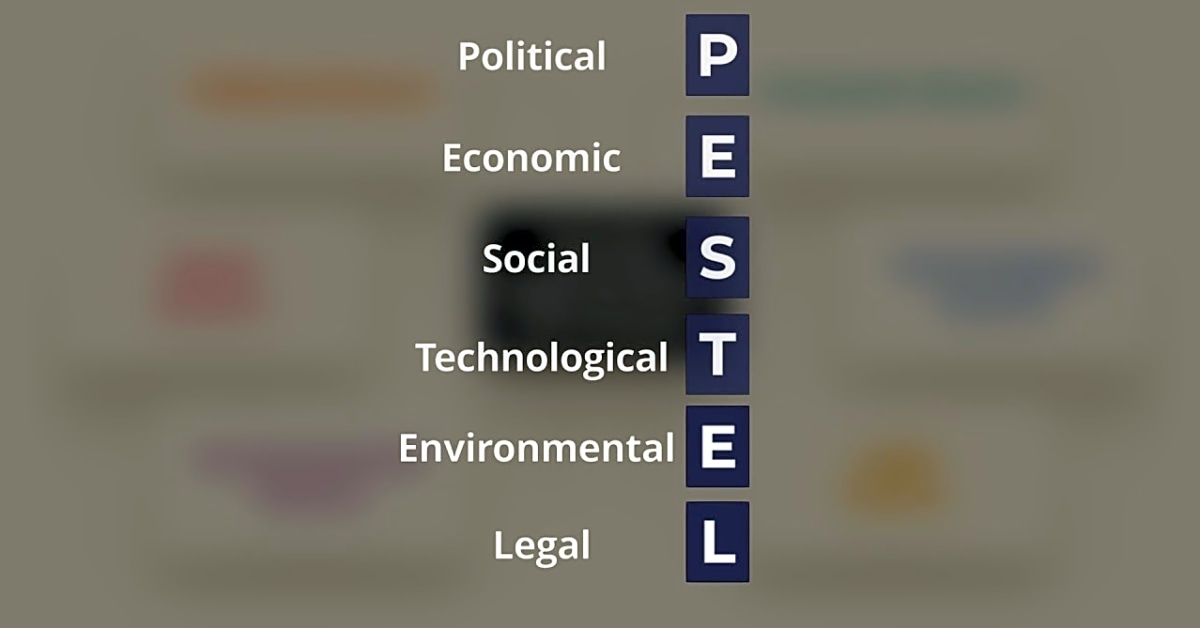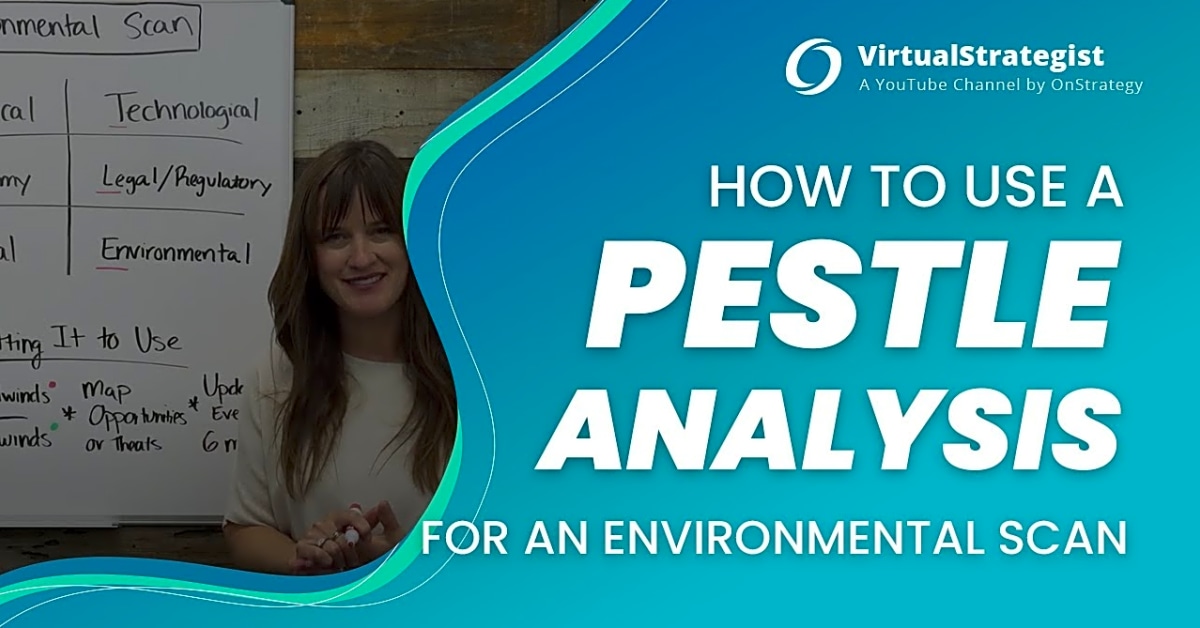PESTLE analysis is a powerful and widely used tool for analyzing the external factors that can impact a business or organization. It stands for Political, Economic, Social, Technological, Legal, and Environmental factors, and is often used in conjunction with SWOT analysis to provide a comprehensive understanding of a company’s position in the market. In this article, we will take a deep dive into PESTLE analysis, exploring its meaning, purpose, and how to effectively implement it in your business strategy. Whether you are a business owner, marketer, or strategist, understanding PESTLE analysis is crucial for making informed decisions and staying ahead of the competition. So let’s get started and gain a comprehensive understanding of this valuable framework.
PESTLE analysis is a powerful tool for understanding the external factors that can affect your business or personal development. It stands for Political, Economic, Social, Technological, Legal, and Environmental analysis. Each of these factors plays a crucial role in shaping the opportunities and challenges that a business or individual may face. That’s why it is important to conduct a PESTLE analysis to gain a comprehensive understanding of the external environment.
The first step in conducting a PESTLE analysis is identifying the factors that fall under each category. This can include government policies, economic trends, social attitudes, technological advancements, legal regulations, and environmental factors. By looking at these factors, you can gain insights into how they may impact your goals and objectives.
Once you have identified the factors, the next step is to analyze their impact on your business or personal development. This involves examining the opportunities and threats that each factor presents. For example, a political change such as a new government policy may create new opportunities for your business, but it could also pose potential threats if it affects your operations negatively.
Real-world examples of PESTLE analysis can be seen in various industries and scenarios. For instance, a company in the food industry may conduct a PESTLE analysis to understand how changes in government regulations on food safety and labeling could impact their business. Similarly, an individual planning to start a new business may use PESTLE analysis to assess the economic climate and social trends in their target market.
To make the process of conducting a PESTLE analysis easier, there are various templates available that you can use. These templates provide a structured framework for organizing your analysis and ensuring you don’t miss any important factors. Some templates also include prompts and questions to guide your analysis and help you think critically about each factor.
In conclusion, PESTLE analysis is a valuable tool for understanding the external factors that can affect your business or personal development. By conducting a thorough analysis and using templates, you can gain valuable insights into the opportunities and threats that may arise. So whether you’re new to PESTLE analysis or looking to improve your techniques, this comprehensive guide has everything you need to get started.
Useful Templates
As with any analysis tool, having a template to guide you through the process can be incredibly useful. PESTLE analysis is no exception. In fact, using a template can help simplify the process and ensure that you cover all the necessary factors.
There are various templates available for PESTLE analysis, each with their own unique approach. Some may focus on specific industries or business types, while others provide a more general framework. It’s important to choose a template that aligns with your specific needs and goals.
One popular template for PESTLE analysis is the 6 P’s model, which stands for Political, Economic, Social, Technological, Legal, and Environmental factors. This model provides a comprehensive overview of the external factors that can impact your organization or personal development.
Another commonly used template is the STEEPLE analysis, which adds Ethical and Demographic factors to the traditional PESTLE model. This can be particularly useful for organizations that prioritize ethical considerations or have a diverse customer base.
No matter which template you choose, it’s important to adapt it to fit your specific needs and goals. Don’t be afraid to modify or combine different templates to create a customized approach that works best for you.
The Basics of PESTLE Analysis
PESTLE analysis is a commonly used strategic planning tool that helps businesses and individuals identify and understand the external factors that can impact their operations, development, and success. The acronym PESTLE stands for Political, Economic, Social, Technological, Legal, and Environmental – these are the six key areas that are typically analyzed in a PESTLE analysis.
Political factors refer to the government policies and regulations that can affect a business or individual. This can include tax laws, trade restrictions, and political stability.
Economic factors pertain to the overall economic climate and its impact on businesses and individuals. This can include factors such as inflation rates, unemployment rates, and consumer spending habits.
Social factors refer to the cultural and societal influences that can affect a business or individual. This can include demographic trends, lifestyle changes, and attitudes towards certain products or services.
Technological factors relate to advancements in technology and how they can impact a business or individual. This can include factors such as automation, digitalization, and innovations in communication.
Legal factors involve laws and regulations that can affect a business or individual. This can include labor laws, health and safety regulations, and intellectual property laws.
Environmental factors pertain to the natural environment and how it can impact a business or individual. This can include climate change, natural disasters, and availability of resources.
Real-World Examples
PESTLE analysis is a powerful tool that can be applied to various industries and scenarios. To help you better understand how it works, let’s take a look at some real-world examples:
1. Coca-Cola Company: In 2018, the beverage giant conducted a PESTLE analysis to assess the political, economic, social, technological, legal, and environmental factors that could impact their operations. This analysis helped them identify potential risks and opportunities, such as shifting consumer preferences towards healthier drinks and government regulations on sugar content.
2. Airbnb: As a global company, Airbnb has to consider various external factors before entering a new market. In their PESTLE analysis, they discovered that local regulations and cultural differences were key challenges they needed to address. This analysis helped them tailor their business strategy and adapt to different markets.
3. Tesla: The electric car company’s PESTLE analysis revealed the potential impact of climate change and government policies on the demand for their products. This led them to focus on innovation and sustainability, as well as advocating for supportive policies.
4. Personal Development: PESTLE analysis is not just limited to businesses. It can also be applied to personal development. For example, an individual looking to pursue a career in technology may conduct a PESTLE analysis to understand the current and future trends in the industry.
Conclusion: These real-world examples demonstrate the versatility and importance of PESTLE analysis in decision-making. By analyzing external factors, organizations and individuals can make informed decisions and stay ahead of potential challenges. Now that you have seen PESTLE analysis in action, it’s time to apply it to your own situation and see the benefits for yourself.
How to Conduct a PESTLE Analysis
Conducting a PESTLE analysis can seem like a daunting task, but with the right approach and tools, it can be a valuable exercise for your business or personal development. In this section, we will break down the steps of conducting a PESTLE analysis and provide tips and tricks to help you get the most out of this framework.
Step 1: Identify the Six Factors
The first step in conducting a PESTLE analysis is to identify the six key factors that make up this framework: Political, Economic, Social, Technological, Legal, and Environmental. These are the external factors that can impact your business or personal development, and understanding them is crucial for making informed decisions.
Step 2: Gather Information
Once you have identified the six factors, the next step is to gather relevant information for each one. This can include market trends, industry reports, government policies, social media discussions, and any other data sources that can provide insight into how these factors may affect you.
Step 3: Analyze and Evaluate
Once you have gathered all the necessary information, it’s time to analyze and evaluate it in relation to your business or personal development. Look for patterns, connections, and potential impacts on your goals or objectives.
Step 4: Consider Future Trends
In addition to current information, it’s important to consider potential future trends that may impact the six factors. This could include advancements in technology, changes in government policies, or shifts in societal attitudes.
Tips and Tricks
Here are a few tips and tricks to keep in mind while conducting your PESTLE analysis:
- Use a SWOT analysis in conjunction with your PESTLE analysis to get a more comprehensive understanding of your current situation.
- Involve a diverse group of individuals in the process to get different perspectives and insights.
- Regularly review and update your PESTLE analysis to account for any changes or new developments in the external environment.
PESTLE analysis is a valuable tool for anyone looking to gain a deeper understanding of their external environment. By following the steps outlined in this guide, you can conduct a thorough PESTLE analysis and use it to inform your decision-making process. Remember, PESTLE analysis is not a one-time exercise, and it should be revisited regularly to stay updated on the ever-changing external factors that can impact your goals.

